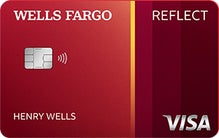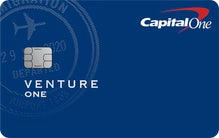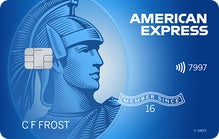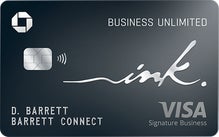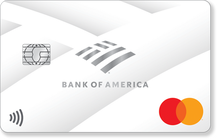13 Best 0% intro APR credit cards of July 2025
Advertiser Disclosure: Bankrate’s editorial team chooses and recommends the credit cards on this page. While we may receive compensation when users apply for cards through this page, our recommendations and card ratings are produced independently without influence by advertising partnerships with issuers.

Get personal card recommendations
Answer 3 simple questions and get matched with 0% intro APR credit cards from Bankrate's marketplace.
How will you use your card?

Filter by
Showing 13 results
Best for shopping
Cardholder rating
on Chase's secure site
See Rates & FeesPurchase intro APR
0% Intro APR on Purchases for 15 months
Regular APR
18.99% - 28.49% Variable
Intro offer
Earn $200 cash back
Rewards rate
1.5% - 5%
Why you'll like this: It combines a fair intro APR offer with a high base rewards rate and a handful of boosted categories.
Reward Details
What you should know
Card Details
on Wells Fargo's secure site
See Rates & FeesPurchase intro APR
0% intro APR for 21 months from account opening
Regular APR
17.24%, 23.74%, or 28.99% Variable APR
Intro offer
N/A
Rewards rate
N/A
Why you'll like this: It pairs a best-in-class intro APR offer with a potentially low ongoing interest rate.
What you should know
Card Details
Best for rotating bonus categories
Cardholder rating
on Discover's secure site
See Rates & FeesPurchase intro APR
0% for 15 months
Regular APR
18.24% - 27.24% Variable APR
Intro offer
Cashback Match
Rewards rate
1% - 5%
Why you'll like this: It blends a generous intro APR and welcome offer with long-term value from high rewards rates and category variety.
Reward Details
What you should know
Card Details
Best for dining
Cardholder rating
on Capital One's secure site
See Rates & FeesPurchase intro APR
0% intro on purchases for 15 months
Regular APR
19.24% - 29.24% (Variable)
Intro offer
Earn $200 Cash Back
Rewards rate
1% - 8%
Why you'll like this: It offers high rewards rates in many everyday bonus categories with no annual fee and fair rates.
Reward Details
What you should know
Card Details
Best for travel
Cardholder rating
on Capital One's secure site
See Rates & FeesPurchase intro APR
0% intro on purchases for 15 months
Regular APR
19.24% - 29.24% (Variable)
Intro offer
Earn 20,000 miles
Rewards rate
1.25 Miles - 5 Miles
Why you'll like this: It's one of the only no-annual-fee travel cards that offers an intro APR and lets you transfer miles to airline and hotel partners.
Reward Details
What you should know
Card Details
Apply with confidence
By applying, you can see if you're approved before impacting your credit
Best for everyday use
Cardholder rating
on American Express's secure site
See Rates & Fees, Terms ApplyPurchase intro APR
0% on purchases for 15 months
APR
20.24%-29.24% Variable
Intro offer
Earn $200
Rewards rate
1% - 3%
Why you'll like this: It offers a solid intro APR and strong rewards rates for popular everyday spending categories.
Reward Details
What you should know
Card Details
Best for business purchases
Cardholder rating
on Chase's secure site
See Rates & FeesPurchase intro APR
0% Intro APR on Purchases for 12 Months
Regular APR
17.49% - 23.49% Variable
Intro offer
Earn $750 bonus cash back
Rewards rate
1.5%
Why you'll like this: You’ll earn valuable Chase points at a great flat rate and can free up cash flow with its intro APR offer — not always a given on business cards.
Reward Details
What you should know
Card Details
Best for flat-rate rewards
on Wells Fargo's secure site
See Rates & FeesPurchase intro APR
0% intro APR for 12 months from account opening
Regular APR
19.24%, 24.24%, or 29.24% Variable APR
Intro offer
$200 cash rewards
Rewards rate
2%
Reward Details
What you should know
Card Details
Best for custom categories
Cardholder rating
Intro offer
$200
Rewards Rate
1% - 6%
Annual fee
$0
Regular APR
18.24% - 28.24% Variable APR on purchases and balance transfers
Why you'll like this: It’s an ultra-flexible card thanks to its intro APR and mix of cash back categories, which you can swap out once per calendar month.
Reward Details
What you should know
Card Details
Best for simple rewards
Cardholder rating
on Capital One's secure site
See Rates & FeesPurchase intro APR
0% intro on purchases for 15 months
Regular APR
19.24% - 29.24% (Variable)
Intro offer
Earn $200
Rewards rate
1.5% - 5%
Why you'll like this: Its streamlined rewards and solid intro APR offer make it a good starter cash back card.
Reward Details
What you should know
Card Details
Apply with confidence
By applying, you can see if you're approved before impacting your credit
Best for families
Cardholder rating
on American Express's secure site
See Rates & Fees, Terms ApplyPurchase intro APR
0% on purchases for 12 months
APR
20.24%-29.24% Variable
Intro offer
Earn $250
Rewards rate
1% - 6%
Why you'll like this: It combines the best rewards rate available at U.S. supermarkets with strong rates and credits for other common purchases.
Reward Details
What you should know
Card Details
Best for low interest
BankAmericard® credit card
Cardholder rating
Purchase intro APR
0% Intro APR for 18 billing cycles for purchases
Regular APR
15.24% - 25.24% Variable APR on purchases and balance transfers
Intro offer
N/A
Rewards rate
N/A
Why you'll like this: It offers a chance at one of the lowest ongoing APRs available on a balance transfer card.
What you should know
Best for pairing
Purchase intro APR
0% for 15 months on purchases
Regular APR
18.24% - 28.24% (Variable)
Intro offer
$200
Rewards rate
1% - 5%
Why you'll like this: Its top rewards rate adapts to match your spending each billing cycle, giving you a shot at one of the best rates available in one of several popular categories.
Reward Details
What you should know
Remove a card to add another to compare
Remove a card to add another to compare
Compare Bankrate's top 0% intro APR credit cards
| Our picks for | Ongoing APR | ||
|---|---|---|---|
Shopping | 15 months 0% Intro APR on Purchases for 15 months | Regular APR: 18.99% - 28.49% Variable | |
Long intro APR | 21 months 0% intro APR for 21 months from account opening | Regular APR: 17.24%, 23.74%, or 28.99% Variable APR | |
Rotating bonus categories | 15 months 0% for 15 months | Regular APR: 18.24% - 27.24% Variable APR | |
Dining | 15 months 0% intro on purchases for 15 months | Regular APR: 19.24% - 29.24% (Variable) | |
Travel | 15 months 0% intro on purchases for 15 months | Regular APR: 19.24% - 29.24% (Variable) | |
Apply with confidence Hover to learn more on American Express's secure site See Rates & Fees, Terms Apply | Everyday use | 15 months 0% on purchases for 15 months | Regular APR: 20.24%-29.24% Variable |
Business purchases | 12 months 0% Intro APR on Purchases for 12 Months | Regular APR: 17.49% - 23.49% Variable | |
Flat-rate rewards | 12 months 0% intro APR for 12 months from account opening | Regular APR: 19.24%, 24.24%, or 29.24% Variable APR | |
Apply now on Bank of America's secure site | Custom categories | 15 billing cycles 0% Intro APR for 15 billing cycles for purchases | Regular APR: 18.24% - 28.24% Variable APR on purchases and balance transfers |
Simple rewards | 15 months 0% intro on purchases for 15 months | Regular APR: 19.24% - 29.24% (Variable) | |
Apply with confidence Hover to learn more on American Express's secure site See Rates & Fees, Terms Apply | Families | 12 months 0% on purchases for 12 months | Regular APR: 20.24%-29.24% Variable |
Low interest | 18 billing cycles 0% Intro APR for 18 billing cycles for purchases | Regular APR: 15.24% - 25.24% Variable APR on purchases and balance transfers | |
Pairing | 15 months 0% for 15 months on purchases | Regular APR: 18.24% - 28.24% (Variable) |

